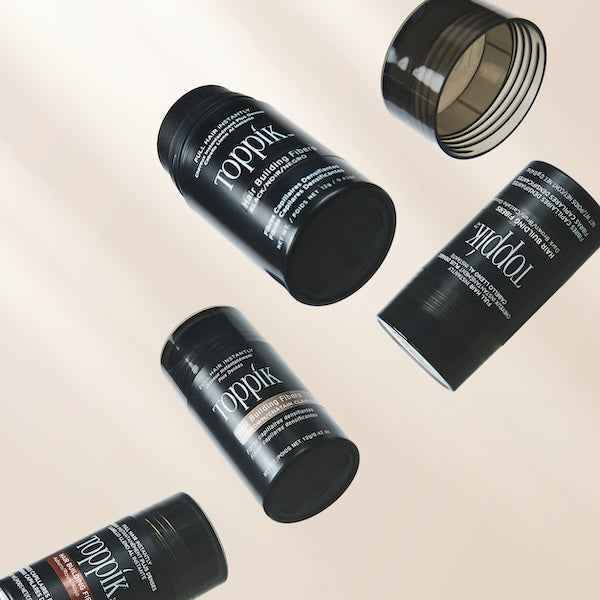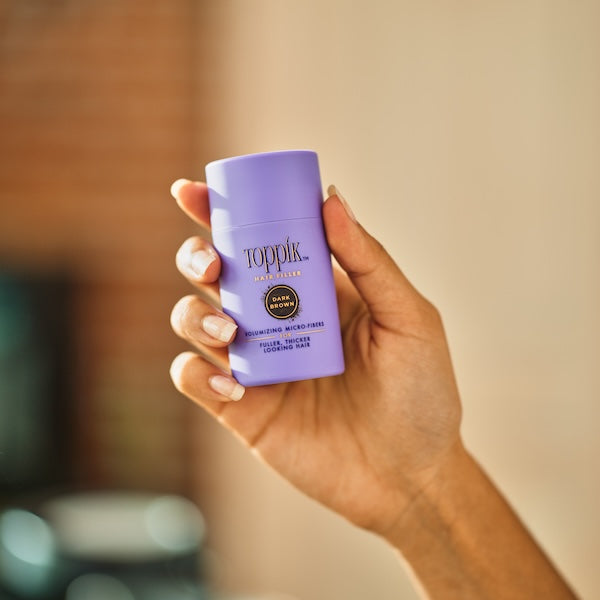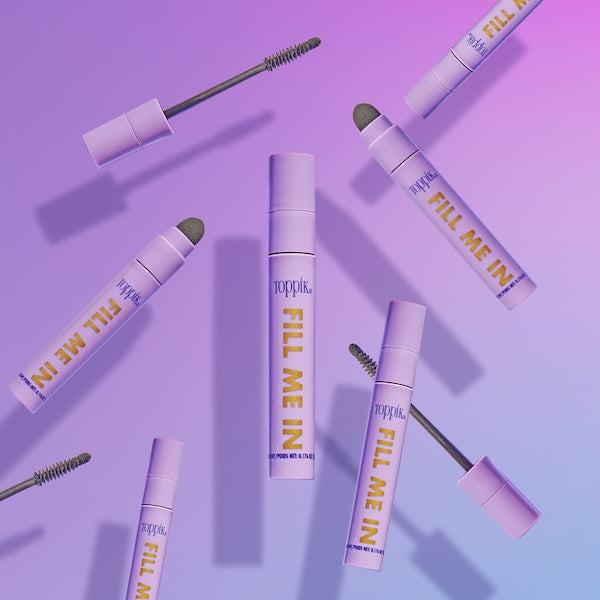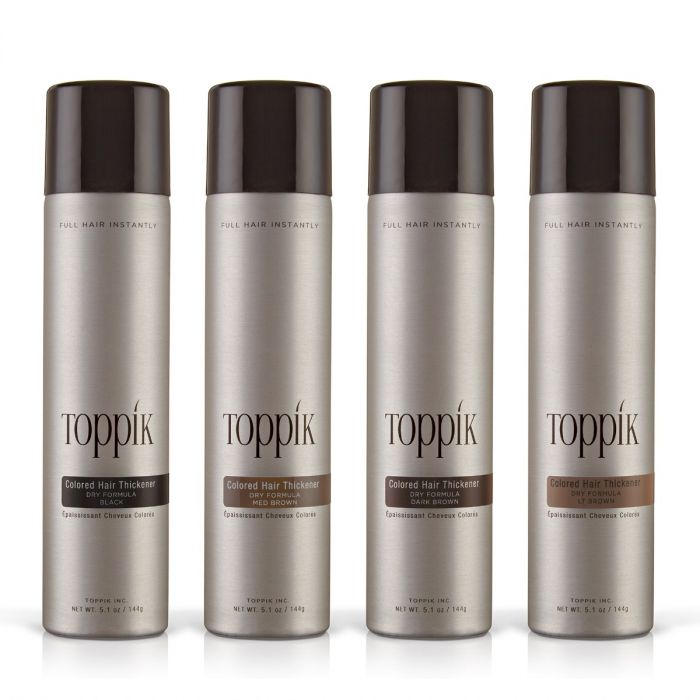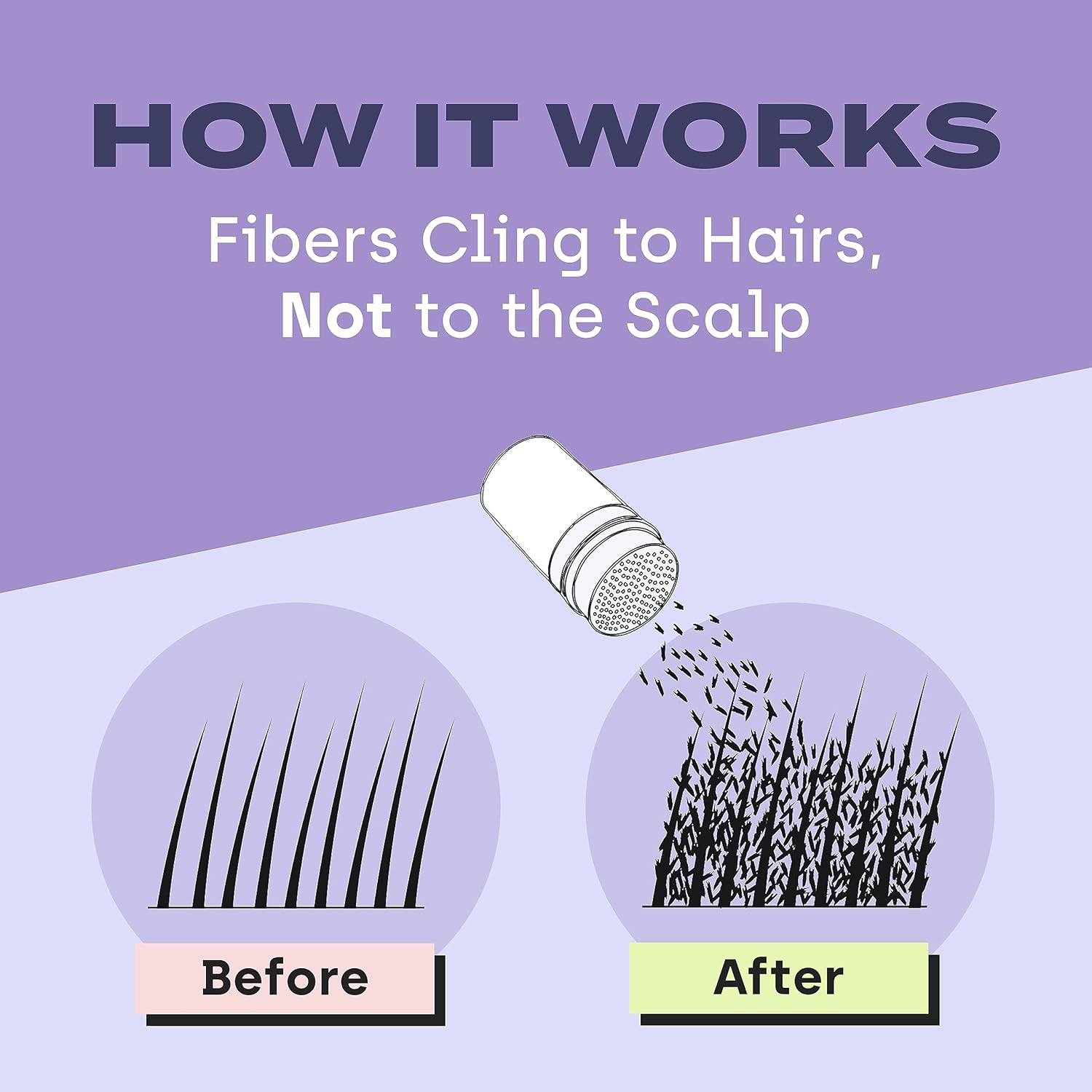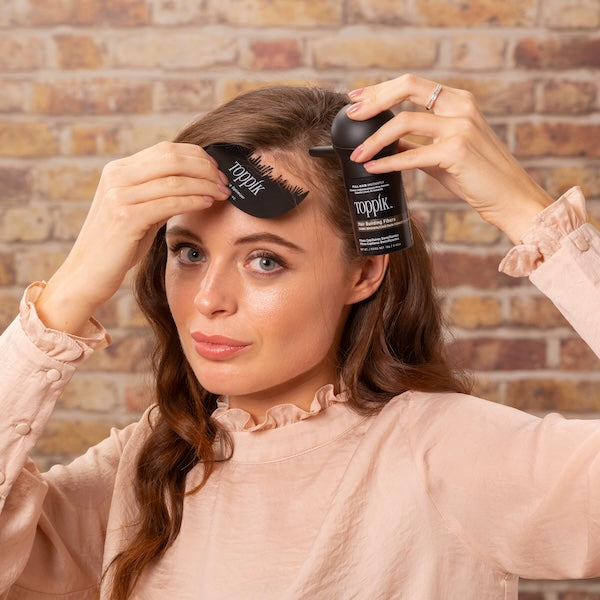Dry, breaking hair is not a good look. Hair breakage means reduced length, plus more frizz and flyaways. So what causes hair breakage and how can you stop it?
Hair breakage is usually caused by bad hair care habits. Typically, a hair strand is protected by a structure of overlapping keratin scales called the cuticle. When bad hair care habits damage and separate these scales, the strand can dry out and break off.
Luckily, with the right know-how, you can easily correct the weak points in your hair care routine to remedy hair breakage. Keep reading to learn what causes hair breakage and how to stop hair breakage in its tracks. 
What Causes Hair Breakage?
1. Using the Wrong Shampoo & Conditioner
Harsh shampoos and lackluster conditioners can result in breakage galore. Instead, invest in a shampoo and conditioner duo formulated to strengthen and moisturize hair, like Toppik Hair Building Shampoo and Conditioner.
How you wash your hair matters as well. When shampooing your hair, concentrate the product on the roots only to prevent the ends from drying out. Use lukewarm water instead of scalding hot (which opens the hair cuticle, exposing strands to heat and other damaging factors). Always follow shampoo with conditioner to replace any lost moisture.
2. Washing Hair with Hard Water
The water in your shower can also make a huge difference in the health of your hair. Hard water contains more chlorine and heavy metals that damage the hair cuticle. Thus, showering with hard water can lead to weakened strands and breakage.
Invest in a showerhead filter that removes those damaging ingredients from your water to keep your hair healthy and strong.
3. Frying Hair with Heat Tools
Excessive heat styling leads to cuticle damage and breakage, so it’s important to take precautions when styling your hair. If you use heat tools daily, cut down to once or twice per week. Always use a heat protectant product before using heat tools to defend hair against damage. And use the lowest heat setting possible to achieve your look. Switch to heat tools with ceramic heating elements rather than metallic, which distribute the heat more evenly and help prevent excessive heat damage.

4. Sleeping on a Cotton Pillowcase
Believe it or not, your bedding can make a real difference in the health of your hair. Cotton pillowcases create friction on your hair at night, roughing up and weakening the cuticle. To stop hair breakage, switch to a satin or silk pillowcase, which provide more slip for your strands.
5. Avoiding Your Hairdresser
It may seem counter-intuitive, but getting regular hair trims will actually help your hair to grow longer. If left untrimmed, split ends can move up the hair shaft and eventually break off. Schedule a trim every eight weeks to keep hair healthy and strong.

6. Brushing Wet Hair
Wet hair isn’t as strong as dry hair, so it’s more prone to breakage. Only use a wide-tooth comb to detangle wet hair because it’s more gentle than a hair brush on vulnerable strands.
Minimize damage when you comb by starting at the roots and gently working towards the ends. If your hair is extra prone to knots, prep for detangling by spritzing hair with a leave-in conditioner. Try Toppik Hair Fattener Advanced Thickening Serum, a volumizing styling serum for fine or thin hair that also adds shine.
Better yet, wait until hair is dry before you brush or comb.
7. Pulling Hair Back in Too-Tight Ponytails
You know how your hair tie often has some hair wrapped around it when you take out your ponytail? That’s breakage. Too-tight elastic hair ties can cause lots of hair damage, which is a big problem if you frequently wear your hair up.
To reduce breakage, move the location of your ponytail daily (i.e. high one day and low the next). Don’t wrap hair elastics too tight and consider switching to scrunchies, which are gentler on hair.
An even better option is to try loose braids. Wearing hair in a loose braid can stop breakage in its tracks since the hair tie is placed at the ends of the hair rather than near the roots.

8. Rough Drying Hair with a Towel
If your first move after washing your hair is rough drying with a cotton towel, you’re doing your strands a disservice. Towel drying hair can rough up and damage the hair cuticle, leading to breakage.
Switch to a highly absorbent microfiber towel specifically designed for drying hair, or use an old cotton t-shirt to gently squeeze extra moisture out of hair when you step out of the shower.
9. Overprocessing Hair with Chemicals and Dyes
Chemical treatments like coloring, bleaching and relaxing can break down the hair cuticle, leading to damage.
To decrease hair breakage, increase the amount of time between processes. According to the American Academy of Dermatology, to avoid excess damage, you should wait 8-10 weeks between chemical treatments.
Have roots coming in between colorist appointments? Toppik Hair Building Fibers can be used to disguise roots in between hair colorings.

10. Soaking Up the Sun
Just as too much time in the sun causes sunburn, UV rays also can damage the hair cuticle and cause breakage. If you’re planning to be outside especially during prime sun hours (between 11:00 and 4:00), wear a wide-brimmed hat and consider using a hair sunscreen.
Hair Breakage Remedies
- If your hair is very damaged, use a deep conditioner once a week to protect and repair strands. For best results, leave the deep conditioner on hair overnight to let it work its magic.
- Certain vitamins and minerals like B vitamins, zinc and iron can help hair to grow stronger . Make sure you’re eating a balanced diet, and take a hair support supplement like Viviscal™ Hair Growth† Supplements to keep hair healthy and strong.*
- Let your hair air dry whenever possible. Ask your hairstylist for a haircut that embraces your natural texture so you’re not so tempted to use heat tools daily.
†Existing hair growth
*These statements have not been evaluated by the Food and Drug Administration. This product is not intended to diagnose, treat, cure or prevent any disease.
